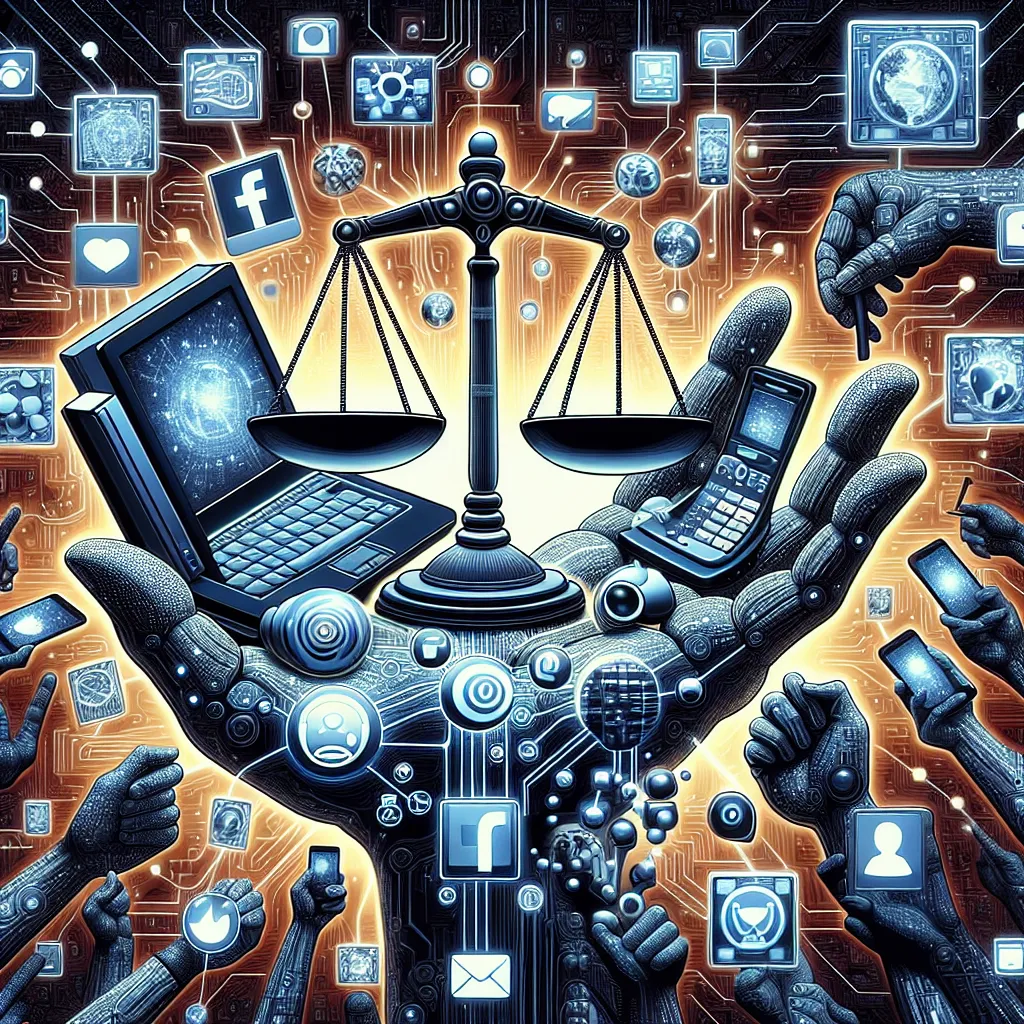Technology’s role in supporting social justice initiatives has become an increasingly relevant topic in IELTS Writing Task 2. This theme intersects with various social issues, making it a prime candidate for future exams. Based on recent trends, we can expect to see questions exploring the impact of technology on equality, activism, and societal change. Let’s examine a potential question and provide sample essays to help you prepare.
 Technology and Social Justice
Technology and Social Justice
Analyzing the Question
Let’s consider the following question that could appear in an IELTS Writing Task 2:
Some people believe that technology plays a crucial role in promoting social justice, while others argue that it can also perpetuate inequality. Discuss both views and give your own opinion.
This question requires you to:
- Discuss how technology supports social justice initiatives
- Explain how technology might contribute to inequality
- Provide your personal perspective on the issue
It’s important to address all parts of the question and provide a balanced argument before stating your own opinion.
Sample Essay (Band 8-9)
Technology has become an integral part of modern society, influencing various aspects of our lives, including the pursuit of social justice. While some argue that technological advancements significantly contribute to promoting equality and fairness, others contend that these same tools can exacerbate existing inequalities. This essay will explore both perspectives before offering a personal viewpoint.
On one hand, technology has undeniably empowered social justice movements by providing unprecedented tools for communication, organization, and information dissemination. Social media platforms, for instance, have enabled activists to reach global audiences, mobilize supporters, and raise awareness about important issues within minutes. The #BlackLivesMatter movement is a prime example of how hashtag activism can spark worldwide conversations and drive real-world change. Additionally, crowdfunding websites have democratized fundraising, allowing grassroots organizations to secure resources for their causes without relying on traditional donors or institutions.
However, critics argue that technology can also reinforce existing societal disparities. The digital divide – the gap between those who have access to modern technology and those who do not – remains a significant concern. In many parts of the world, lack of internet access or digital literacy can exclude individuals from participating in online activism or benefiting from digital resources. Furthermore, algorithmic bias in artificial intelligence systems used for decision-making in areas such as hiring, lending, and criminal justice can perpetuate and even amplify existing prejudices, disproportionately affecting marginalized communities.
In my opinion, while technology does have the potential to exacerbate inequalities, its overall impact on social justice initiatives is predominantly positive. The key lies in responsible development and implementation of technological solutions. By actively addressing issues such as the digital divide and algorithmic bias, we can harness the power of technology to create more inclusive and equitable societies. Moreover, the rapid pace of technological advancement offers continuous opportunities to innovate and find new ways to promote social justice.
In conclusion, technology’s role in supporting social justice is complex and multifaceted. While it presents challenges, the benefits of increased connectivity, information access, and organizational capabilities far outweigh the potential drawbacks. As we move forward, it is crucial to remain vigilant and ensure that technological progress aligns with the principles of equality and fairness for all.
(Word count: 368)
Sample Essay (Band 6-7)
Nowadays, technology is everywhere in our lives, and it affects how we fight for social justice. Some people think technology helps make society fairer, but others believe it can make inequality worse. This essay will look at both sides and give my opinion.
On the positive side, technology gives people many tools to fight for social justice. Social media is a big help because it lets activists share their messages with many people quickly. For example, when there’s an unfair event, people can use Twitter or Facebook to tell others and organize protests. Also, online petitions make it easy for people to support causes they care about, even if they can’t go to real-life events.
However, there are also problems with using technology for social justice. Not everyone has the same access to technology, which is called the digital divide. Poor people or those in rural areas might not have good internet, so they can’t join online movements easily. Another issue is that computer programs used by companies or governments can sometimes be unfair to certain groups of people without meaning to, because of how they’re made.
In my opinion, even though there are some problems, technology is mostly good for social justice. It helps more people learn about important issues and join in to make changes. But we need to be careful to make sure technology is fair for everyone.
To conclude, technology has both good and bad effects on social justice efforts. While it can cause some problems, I believe the benefits are greater. We should keep using technology to fight for fairness, but also work on solving the issues it can create.
(Word count: 276)
Key Points to Remember When Writing
-
Structure: Both essays follow a clear structure with an introduction, body paragraphs discussing both sides of the argument, and a conclusion. The Band 8-9 essay provides more detailed analysis and sophisticated language.
-
Vocabulary: The higher band essay uses more advanced vocabulary and phrases. For example, “exacerbate existing inequalities” instead of “make inequality worse”.
-
Examples: Both essays provide specific examples to support their arguments. The Band 8-9 essay offers more detailed and varied examples.
-
Personal Opinion: Both essays clearly state the writer’s opinion, but the Band 8-9 essay provides a more nuanced perspective.
-
Coherence and Cohesion: The Band 8-9 essay uses more sophisticated linking words and phrases to connect ideas smoothly.
Essential Vocabulary for This Topic
-
Social justice (noun) /ˈsəʊʃəl ˈdʒʌstɪs/: Fairness in terms of the distribution of wealth, opportunities, and privileges within a society.
-
Digital divide (noun) /ˈdɪdʒɪtl dɪˈvaɪd/: The gulf between those who have ready access to computers and the Internet, and those who do not.
-
Algorithmic bias (noun) /ˌælɡəˈrɪðmɪk ˈbaɪəs/: Systematic and repeatable errors in a computer system that create unfair outcomes.
-
Crowdfunding (noun) /ˈkraʊdfʌndɪŋ/: The practice of funding a project or venture by raising money from a large number of people, typically via the internet.
-
Grassroots (adjective) /ˈɡrɑːsruːts/: Of or relating to the common people, especially as contrasted with the leadership of a movement.
-
Mobilize (verb) /ˈməʊbəlaɪz/: Organize and encourage (a group of people) to take collective action in pursuit of a particular objective.
-
Perpetuate (verb) /pəˈpetʃueɪt/: Make (something) continue indefinitely.
-
Marginalized (adjective) /ˈmɑːdʒɪnəlaɪzd/: Treated as insignificant or peripheral.
-
Dissemination (noun) /dɪˌsemɪˈneɪʃn/: The act of spreading something, especially information, widely.
-
Inclusive (adjective) /ɪnˈkluːsɪv/: Not excluding any section of society or any party involved in something.
In conclusion, writing about technology’s role in social justice initiatives requires a balanced approach, considering both the benefits and potential drawbacks. Practice writing essays on this topic, focusing on structure, vocabulary, and providing concrete examples. You might also consider exploring related themes such as the impact of social media on political movements or the role of technology in education equality. Remember to post your practice essays in the comments section for feedback and further improvement!


